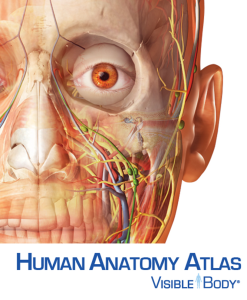Enjoy a study break this September and take advantage of one of these events in Washington, DC! Healthy Living @ Himmelfarb can help you find great ways to explore DC to refresh yourself and be ready to re-focus on school.


The Rotation: A Himmelfarb Library Blog
Resources, tools & health news from GW Himmelfarb Health Sciences Library
Enjoy a study break this September and take advantage of one of these events in Washington, DC! Healthy Living @ Himmelfarb can help you find great ways to explore DC to refresh yourself and be ready to re-focus on school.

 Come check out Himmelfarb Library's annual book sale!
Come check out Himmelfarb Library's annual book sale!
When: September 12-15: 8:30 am-midnight (Tues-Thurs) and 8:30-12 noon (Fri)
Where: First Floor, Himmelfarb Library
Payment by cash or check only!
 Visible Body Human Anatomy Atlas provides a new way to study and explore anatomy. This online anatomy atlas allows users to view specific structures and layers from head to toe, rotate anatomical models, and explore systemic and regional anatomy.
Visible Body Human Anatomy Atlas provides a new way to study and explore anatomy. This online anatomy atlas allows users to view specific structures and layers from head to toe, rotate anatomical models, and explore systemic and regional anatomy.
Visible Body Human Anatomy Atlas includes 5,000+ medically accurate anatomical structures and was developed by medically trained illustrators and reviewed by anatomists. This atlas allows users to explore human anatomy via multiple approaches: systemic anatomy, regional anatomy, cross sections, senses, and muscle actions.
If you're an instructor interested in using Visible Body Human Anatomy Atlas in instruction, you can explore examples of its integration and course materials on the Visible Body Education webpage.
This resource is available to users from on- and off-campus locations as well as as an app. For web access, system requirements will display when you access the resource, and additional information is available via the Support Troubleshooting FAQ. For app access, please consult the Visible Body Human Anatomy Atlas app instructions.
 Did you wait too long to buy your eclipse glasses?
Did you wait too long to buy your eclipse glasses?
Don't worry, you can still safely view the eclipse by using a pinhole camera!
Stop by the first floor of Himmelfarb Library between 9-3 on Monday, August 21 to make your own. All supplies and instructions will be provided but they are offered first come, first served so don't wait too long to get yours!
The Himmelfarb Library elevator will be out of service for replacement from September 11, 2017 through November 29, 2017. This project will also cause some noise disruptions in the library although the noisiest times will be from 5 a.m. to 8 a.m. on the B2 level on weekdays only.
Air handlers on the library's roof will be replaced between September 15 and October 15, 2017. This project will cause some noise on the 3rd floor rooftop on weekdays.
For questions or concerns regarding this maintenance, please contact SMHS Facilities at (202) 994-2312.
 Research recently published in Nature describes how scientists edited the genes in a human embryo. Scientists sought to remove a specific genetic mutation, the MYBPC3 mutation, which has been associated with the development of hypertrophic cardiomyopathy.
Research recently published in Nature describes how scientists edited the genes in a human embryo. Scientists sought to remove a specific genetic mutation, the MYBPC3 mutation, which has been associated with the development of hypertrophic cardiomyopathy. Do you have a favorite computer in Himmelfarb's third floor computer lab? Wondering if it's available for you to use right now?
Do you have a favorite computer in Himmelfarb's third floor computer lab? Wondering if it's available for you to use right now?
Check out our new online availability checker to see how many computers are currently available for use. You can see an overall bar chart of the number of available computers by room, or click on any of the rooms to see a map showing which computers are being used (in red).
Once you're looking at a room, you can also search/filter by the software available on each workstation. Click on the magnifying glass in the upper right, then choose the desired software program. The computers with that program will display on the map; you can also expand the search to the other rooms at this point.
This online computer availability service is available via the campus network (wired, GWireless) or via the VPN if you are off-campus.
 Congratulations to Mary Matecki, the winner of the MSI Library Orientation door prize, a pass for two to the Newseum!
Congratulations to Mary Matecki, the winner of the MSI Library Orientation door prize, a pass for two to the Newseum!